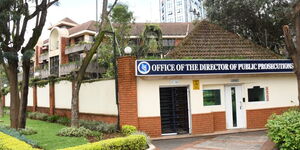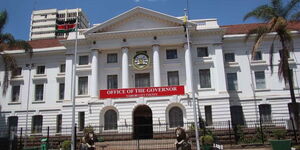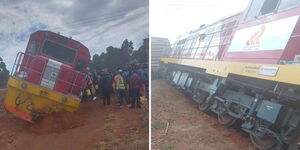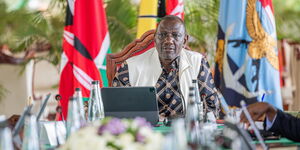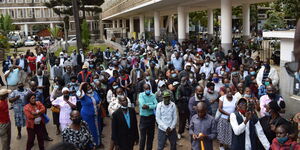Kenya's capital city has undergone major changes over the last few years that have seen some of its iconic buildings and streets morph to match its new-age look.
Luthuli Avenue's refurbishment was the first to capture the interest of city residents. Former Nairobi Governor Mike Sonko allocated Ksh24 million for the joint project with the United Nations Human Settlements Programmer (UN-Habitat).
The famous avenue was converted into a one-way street with matatus that used to use it as a terminus forced out. Motorists now join the road from Tom Mboya and exit onto River Road.
Pedestrian walkways were also expanded with benches installed at various points along the street.
The creation of the Nairobi Metropolitan Service (NMS) by President Uhuru Kenyatta at the start of the year also kickstarted a chain of projects that changed the city's landscape.
Key among them was the revival of Nairobi Commuter Trains that resulted in the setting up of new train stations across the city.
The Kenya Railway Corporation (KRC) began operating the 5 meter-gauge class 61 DMUs on the new Nairobi Commuter Network (NCR) on November 10, following a ceremony at Nairobi Central station attended by the president.
The project included the upgrading of existing stations, signaling systems, and around 100km of track, as well as the construction of new stations in Buru Buru, Pipeline, Umoja, Githurai, and Donholm.
According to KRC, the project was to be carried out in 3 phases. First was the upgrading of the four existing commuter lines as well as the creation of a new rail link to Jomo Kenyatta International Airport (JKIA).
The second phase will involve the extension of commuter services to Thika, Limuru and Lukenya, with the last phase set to focus of taking the service to Ongata Rongai, Kiserian, Ngong, Kiambu, Ruai and Kangemi.
The transport expansion project also led to the creation of new bus terminuses across the city as well as the expansion of existing ones.
NMS announced that there would be shuttles for commuters who would not be able to walk or cycle from the newly built Green Park terminus situated at Railways Club along Haile Selassie Avenue.
It added that commuters could also use the Non-Motorised Transport Corridors (NMT) which have both cycleways and walkways to and from the CBD.
Then came the commissioning of the Nairobi Expressway project that has changed the capital's road infrastructure with iconic places such as Lunar Park demolished to make way for the 27.1km project.
The Expressway begins at Mlolongo, runs above Uhuru highway, and on towards Waiyaki Way where it is set to end at the James Gichuru junction.
Artistic impressions of the new road once complete show a totally new landscape that will see new overpasses and elevated roads.
Hundreds of trees have been cut down to make way for the project which has, in turn, changed the landscape of areas such as Westlands.
The mixed-use commercial and residential neighborhood (Westlands) located approximately 3.2km Northwest of the CBD has also seen major changes over the last years.
Known landmarks such as the Sarit Centre, The Mall and Unga House, and a cluster of shops, restaurants, bars and nightclubs are slowly being replaced by skyscrapers as investors look to meet the growing demand for rental space.
A notable new building currently under construction in the area is the Twin Towers located in the Chiromo area.
The building cuts across Nairobi's new skyline, marking the rise of Westlands into the city's business hub.
Not to be outdone, the Upperhill area in Nairobi has also been transitioning into a hub of its own, with hundreds of conglomerates opting to use the high-end commercial spaces available in the area as their headquarters.
Upperhill currently boasts of having some of the tallest buildings in the country, with the commissioning of the construction of Pinnacle Towers set to become the tallest building ever.
It will encompass a 45-floor Hilton Hotel and the highest viewing deck in Africa. It will also have a helipad at over 800 feet making it the highest on the continent as well.
The combination of infrastructure development and new buildings has seen Kenya's capital shed its old look and transition into a modern metropolis.
Check out some more photos below:

